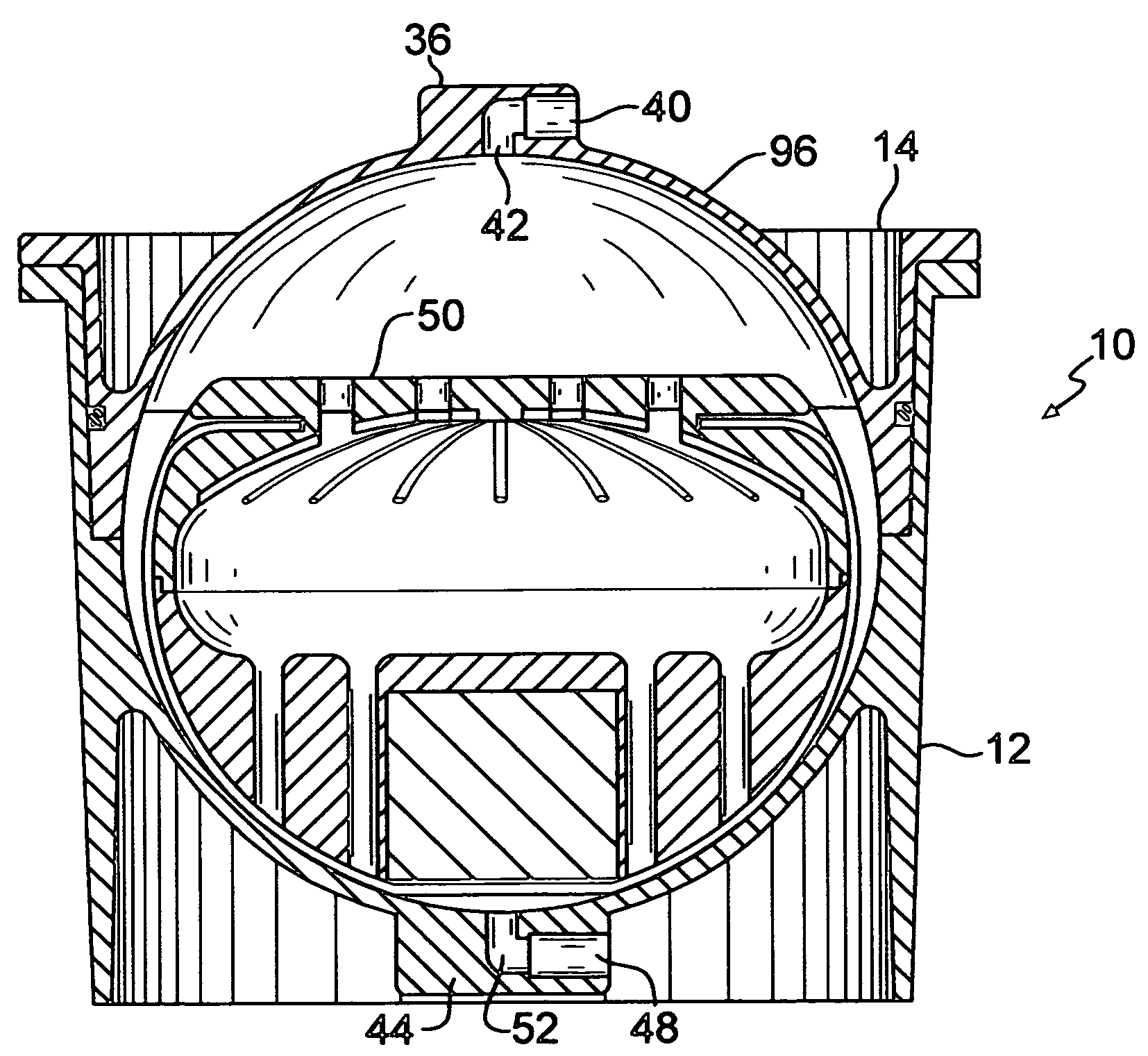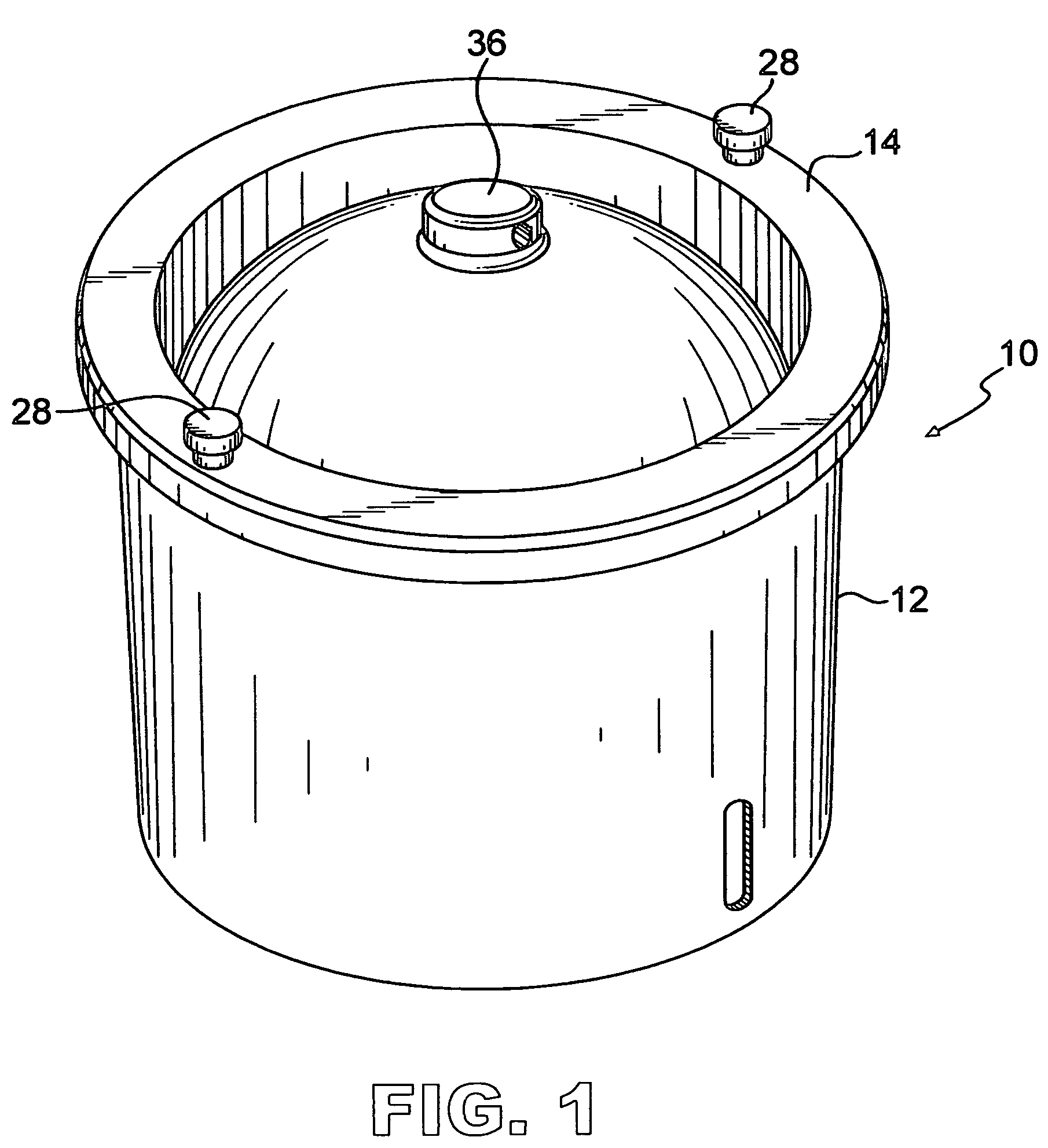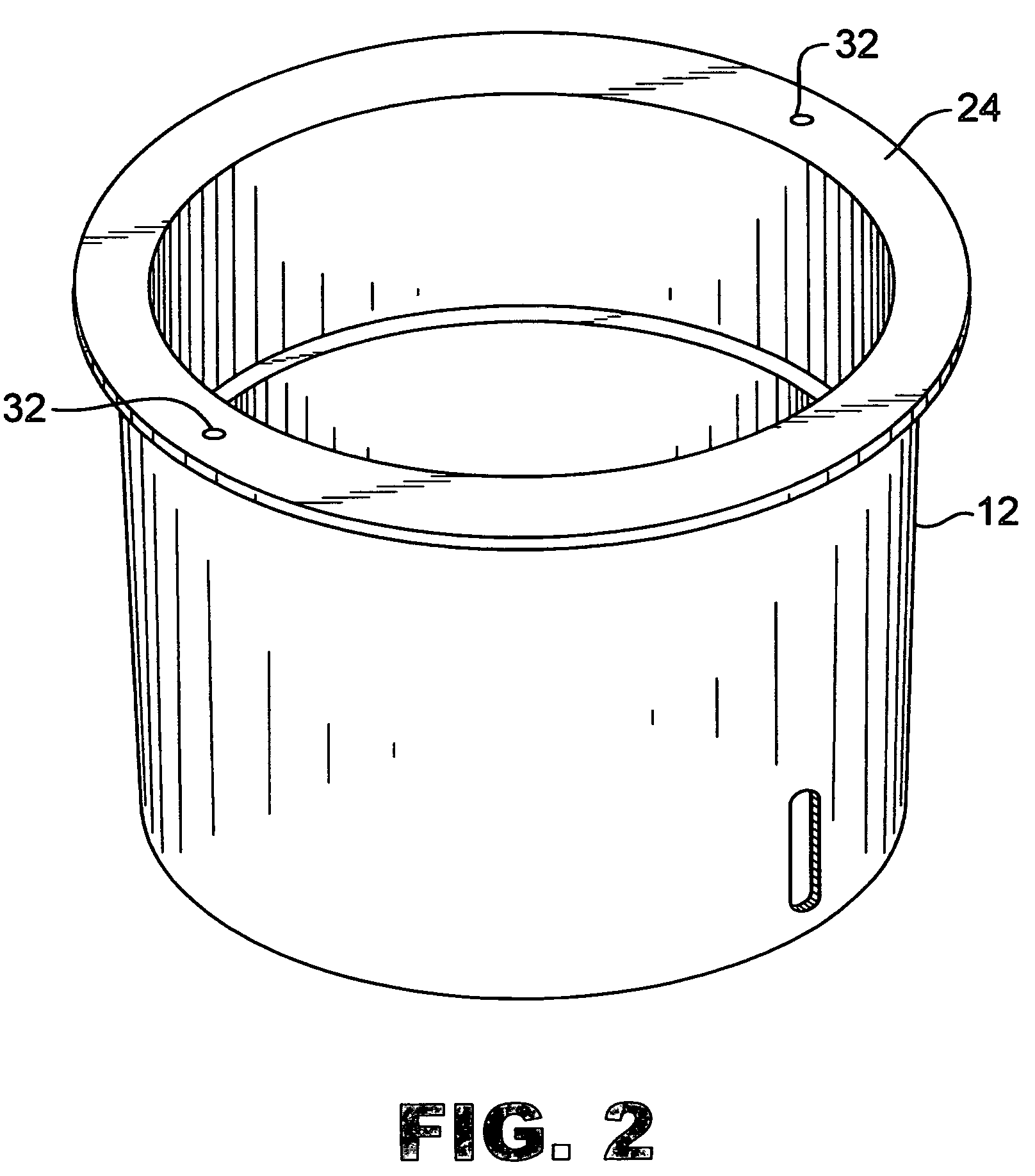Organ preservation container and method
a technology for organs and containers, applied in the direction of drug compositions, separation processes, liquid displacement, etc., can solve the problems of deteriorating cell function, progressing to irreversible damage, and too large to enter the cells, so as to facilitate the contact of the organ
- Summary
- Abstract
- Description
- Claims
- Application Information
AI Technical Summary
Benefits of technology
Problems solved by technology
Method used
Image
Examples
Embodiment Construction
[0035]There is shown in FIGS. 1-11, a container 10 for preserving organs. The container 10 has a housing 12 and a closure 14 for hermetically sealing the housing 12. The housing 12 contains a dual layer liquid composition which forms a liquid-liquid interface. The liquid can be a preservation solution and an oxygen-dissolving solution, although other solutions are possible. The closure 14 can be engaged to the housing 12 by any suitable structure. In one aspect, the closure 14 has a flange 18 which mates against a flange 24 of the housing 12. Suitable structure, such as threaded fasteners 28, can be provided and can engage suitable cooperating apertures 30 in the closure 14 and apertures 32 in the housing 12 to secure the closure 14 to the housing 12. Alternative sealing structure, such as O-rings and gaskets can be provided. Alternative means of securing the closure 14 to the housing 12 are possible, for example, the closure 14 and housing 12 can comprise cooperating threaded engag...
PUM
| Property | Measurement | Unit |
|---|---|---|
| density | aaaaa | aaaaa |
| density | aaaaa | aaaaa |
| density | aaaaa | aaaaa |
Abstract
Description
Claims
Application Information
 Login to View More
Login to View More - R&D
- Intellectual Property
- Life Sciences
- Materials
- Tech Scout
- Unparalleled Data Quality
- Higher Quality Content
- 60% Fewer Hallucinations
Browse by: Latest US Patents, China's latest patents, Technical Efficacy Thesaurus, Application Domain, Technology Topic, Popular Technical Reports.
© 2025 PatSnap. All rights reserved.Legal|Privacy policy|Modern Slavery Act Transparency Statement|Sitemap|About US| Contact US: help@patsnap.com



